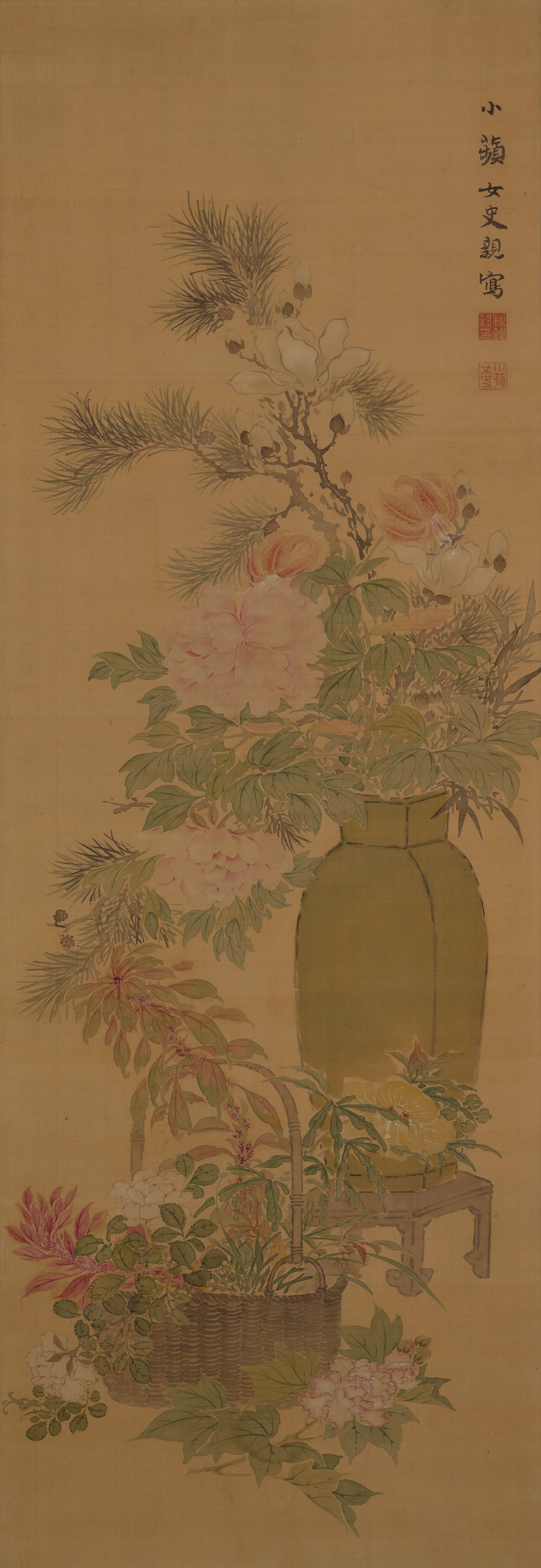Finding Gender in Japanese Literati Painting
- Alison Miller
Where do we locate gender within a work of art? Is it in the subject matter, the maker, the viewer, the larger cultural milieu of production and reception, or is it a combination of these factors? Should the identity of the artist relate to our reception of their work? The objects exhibited in Her Brush: Japanese Women Artists from the Fong-Johnstone Collection provide varied answers to these questions. In woodblock prints, women are often the subject of the image and the male gaze; in ceramics, women were makers but limited in the tools they could use, resulting in different and often innovative forms; and in the realm of bunjinga (literally, literati painting), women artists enjoyed greater equality and access than they did in other artistic pursuits.
Although there were women artists working in a variety of media, historically, the majority were active in bunjinga, an art form that emerged in Japan in the early eighteenth century. Owing to the fact that eccentrics were tolerated, welcomed, and appreciated in bunjinga circles more so than elsewhere in the art world, some women found their niche in the literati community of painters. The term bunjinga is used interchangeably with nanga (southern painting) in reference to the Southern School of Chinese literati painting in which bunjinga had its roots. Bunjinga in Japan included expanded styles and subject matter and is typically characterized by ink and brushwork on paper or silk, representing subjects such as landscapes, scholarly gatherings, or plant life.
The bunjinga painter Noguchi Shōhin (野口小蘋 1847–1917) was born in Osaka and is often described as a child prodigy, studying poetry and painting from a young age. Her father nurtured her interests but passed away when she was just sixteen, leaving Shōhin to support her mother by selling paintings while the family lived in Nagoya.1 She trained in the studio of the well-known male landscape painter Hine Taizan (日根対山 1813–1869), became a professor of painting at the Peers’ Girls School, a women’s university, in 1889, and was eventually appointed an official artist for the imperial family. Efforts toward gender equality in the Meiji period (1868–1912) meant that she widely exhibited and that her talent was recognized in her lifetime, but her experiences were uncommon for women in the nineteenth century.
While we do know that Shōhin emphasized her femininity in her professional image, we do not know if she would have wanted to be called a woman artist. Qualifiers of identity can recognize disparities in advantage and provide points of connection, but they can also perpetuate difference. Although Meiji women were afforded greater social mobility and educational opportunities than their predecessors, they were still limited in their professional options, meaning Shōhin’s success was unusual. As a result, today we may find in her biography a narrative of triumph and resilience or a fascinating story of success against all odds. Yet a gendered approach is not typically applied to Shōhin’s famed male contemporary Tomioka Tessai (富岡鉄斎 1836–1924), who trained under the nun Ōtagaku Rengetsu (太田垣蓮月 1791–1875). The masculinity of Tessai as an artist, the specificity of the male artistic experience, or markers of gender in men’s paintings are left as unexamined topics, as is the impact on his work vis-a-vis his training by a woman. Rather, the study of gendered artistic identity remains one-sided.
Ultimately, when considering gender in the context of art and artists, we are left with these essential questions: Where does the value of art lie, and what responsibilities do gatekeepers such as curators, academics, gallerists, and collectors have to change the parameters of how we understand artworks by women? Her Brush is specifically about Japanese women artists, celebrating their talent and perseverance and pushing the field to consider new approaches to gender in Japanese art, yet if an exhibition of all women’s works were presented without the qualifier in the title, how would our perceptions change? Would the show be more or less popular without the term woman in the title?
The canon of art history is constantly rewritten, and the value of art is endlessly shifting. Gender as a lens for understanding visual culture is a relatively recent approach in the history of art as a field, and Her Brush owes its very existence to this shift. As gender theory focuses less on the male/female binary, we must grapple with what turn the field will take next and what new visual connections and values lie ahead.
Watch Alison Miller's Symposium Presentation
-
Patricia Fister, Japanese Woman Artists (Lawrence, KS: Spencer Museum of Art, 1988), 165. ↩︎

